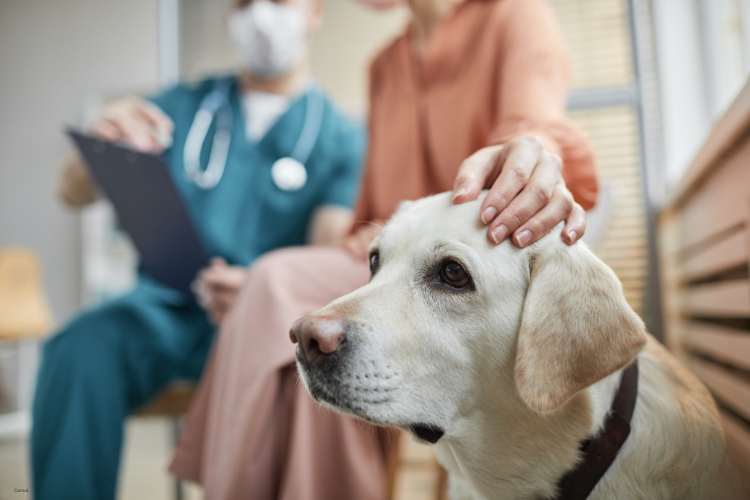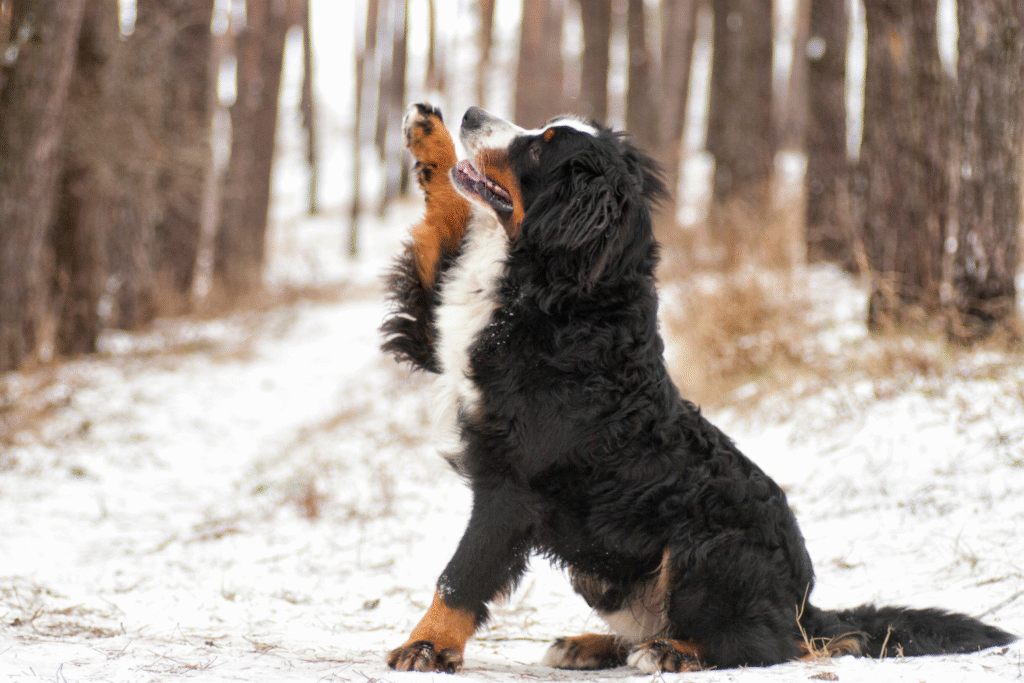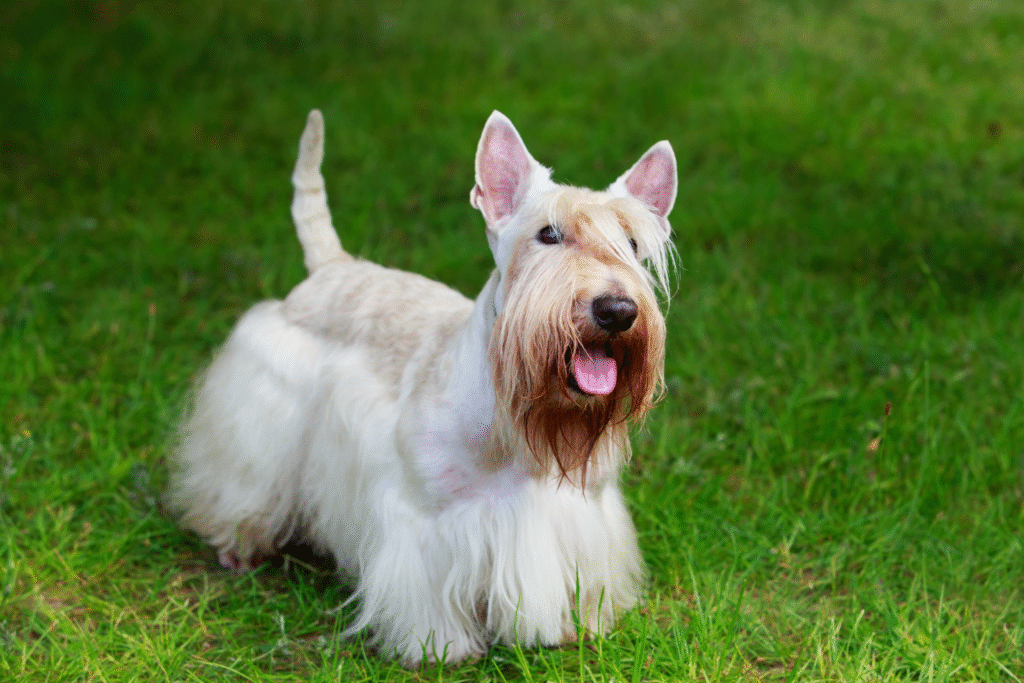Some breeds carry silent risks hiding beneath their charm.

Cancer is heartbreakingly common in dogs, and for some breeds, the odds begin stacking against them far earlier than most owners realize. By the time they reach their tenth birthday, many are already fighting invisible battles at the cellular level. Scientists have linked genetics, body size, and certain inherited mutations to early-onset cancers, making some breeds particularly vulnerable. Knowing which ones are most at risk doesn’t just prepare owners for the road ahead, it can literally save lives when early screenings and lifestyle adjustments come into play.
1. Golden Retrievers are heartbreakingly prone to early cancers.

Golden Retrievers are known for their sweetness, but beneath that sunny exterior, their genetics hide a dark truth. Studies show they have one of the highest rates of cancer among all breeds, with nearly 60 percent developing it in their lifetime, as stated by the Morris Animal Foundation. The most common types are lymphoma and hemangiosarcoma, both of which often appear before age ten. Researchers believe that decades of selective breeding may have intensified certain mutations, leaving even young Goldens vulnerable. The breed’s popularity, ironically, helped preserve the same genes that threaten its future.
2. Boxers face an aggressive cancer risk few owners expect.

Boxers, full of energy and affection, are quietly battling a serious predisposition to mast cell tumors and lymphomas. Their short coats make early lumps easy to spot, but the disease often spreads faster than owners realize. It’s especially tragic because they can look so healthy right up until a diagnosis. According to the American Kennel Club, many Boxers develop cancer between ages six and eight, well before the senior years most expect. Researchers suspect that environmental triggers, combined with inherited cell mutations, amplify their early risk and shorten their lifespan more than many breeds their size.
3. Bernese Mountain Dogs rarely reach old age unscathed.

The Bernese Mountain Dog’s gentle nature hides one of the shortest average lifespans in the canine world. They are especially vulnerable to histiocytic sarcoma, a cancer that devastates their blood and immune systems, as reported by the Journal of Veterinary Internal Medicine. Most Berners develop some form of cancer before age ten, and even early treatment often fails to extend their years by much. The heartbreak for owners is seeing such loving, loyal dogs fade long before their time. Many experts now advocate for expanded genetic testing to identify carriers before breeding occurs.
4. Rottweilers carry a genetic weight few can escape.

Powerful and stoic, Rottweilers often mask pain until cancer is advanced. Bone cancers like osteosarcoma frequently strike between ages seven and nine, with lameness or swelling often mistaken for arthritis. Owners may not notice how quickly the disease spreads until it’s too late. Their larger body size, combined with specific lineage-based mutations, increases the odds dramatically. What’s particularly haunting is that even the healthiest-looking Rotties can be silently developing tumors in their limbs, waiting to show symptoms only once the disease has taken hold.
5. Doberman Pinschers are quietly vulnerable to hidden tumors.

Despite their sleek and athletic look, Dobermans carry a heightened risk for cancers affecting the liver and spleen. Many of these tumors remain undetected until a sudden collapse occurs, leaving owners shocked by how fast it unfolds. The breed’s strong lineage, selectively refined over generations, unintentionally concentrated certain cancer-linked genes. While they remain loyal and fearless protectors, their bodies often betray them before their spirit does. Routine bloodwork and abdominal scans are now encouraged by vets to catch early warning signs that are otherwise invisible until too late.
6. Great Danes often develop cancer before they slow down.

For a breed that towers over most others, Great Danes have a surprisingly short window of robust health. Bone cancer is a frequent culprit, often emerging while they still seem youthful. Because Danes grow rapidly and bear immense weight, microscopic fractures can trigger abnormal cell growth that spirals into malignancy. Owners often dismiss early limping as growing pains, but by the time scans are ordered, it’s usually advanced. Their immense size, combined with fast cellular turnover, makes them biologically predisposed to cancers that smaller dogs rarely face so young.
7. Scottish Terriers pay a hidden price for their boldness.

Their confident strut hides one of the highest rates of bladder cancer in any breed. Scottish Terriers are prone to a form known as transitional cell carcinoma, which typically develops in midlife and worsens quickly. Researchers believe environmental exposure—like lawn chemicals and certain grooming products—can worsen the risk. Their genetic predisposition, however, means even careful owners face uncertainty. What’s especially deceptive is that the first symptoms often mimic urinary infections, so the diagnosis comes only after months of failed treatments. Vigilance and early testing remain a Scotty’s best defense.
8. Beagles can develop cancers far earlier than expected.

It surprises many owners to learn that Beagles, often seen as sturdy and playful, are prone to various cancers, including lymphoma and thyroid cancer. Their compact size and resilient demeanor mask early symptoms, making detection tricky. Because Beagles have been used in research for decades, much of what we know about canine oncology comes from studying them. Ironically, those same studies have revealed that their cancer patterns closely mirror humans’, giving veterinarians valuable insights into shared disease mechanisms across species.
9. German Shepherds are not immune to genetic betrayal.

Highly intelligent and loyal, German Shepherds face a notable risk of hemangiosarcoma, particularly in middle age. Their large frame and high activity levels can conceal internal tumors until they rupture. Many owners report sudden weakness or collapse as the first sign. Selective breeding for strong physiques inadvertently preserved genetic flaws tied to early cancer development. For such an iconic breed, it’s a painful reminder that even strong genetics can harbor fragility. Regular vet visits and abdominal ultrasounds are increasingly recommended as part of their midlife care routine.
10. Labrador Retrievers face rising cancer rates worldwide.

Labs are the picture of health in most people’s minds, yet modern data tells another story. As breeding intensified their popularity, researchers began noticing a concerning uptick in lymphomas and mast cell tumors before age ten. Their risk seems higher in certain color lines, particularly yellow Labs, though science hasn’t fully explained why. Diet, weight, and environmental factors likely play roles, but genetics remain the core issue. Even with early detection, many Labs develop recurring cancers that mirror the same patterns found across generations, making awareness their most powerful protection.
